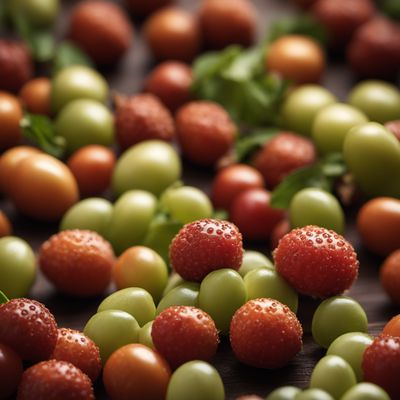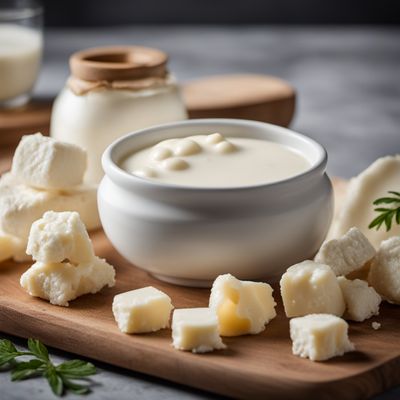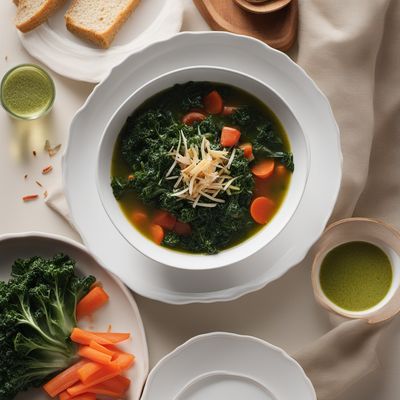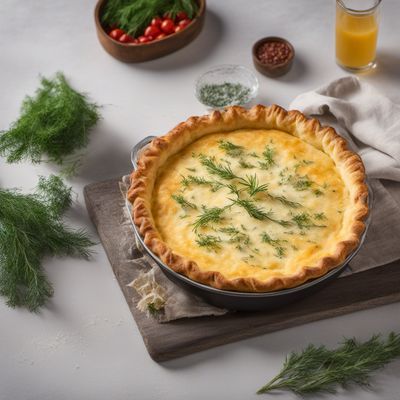
Ingredient
Cheese, urda
The Creamy Delight: Exploring the World of Urda Cheese
Urda cheese is a soft, fresh cheese with a smooth and creamy texture. It is made from cow's milk and has a slightly tangy and mildly salty taste. The cheese is typically white in color and has a moist consistency. It is often compared to cottage cheese or ricotta due to its similar texture and flavor.
Origins and history
Urda cheese has its origins in Eastern Europe, particularly in Romania and Moldova. It has been a staple in the region's cuisine for centuries. The cheese is believed to have been introduced by the nomadic tribes that roamed the area, who used it as a way to preserve milk. Over time, it became an integral part of the local culinary traditions and is now enjoyed in various dishes across the region.
Nutritional information
Urda cheese is a good source of protein and calcium. It also contains essential vitamins such as vitamin A and vitamin B12. A 100-gram serving of Urda cheese provides approximately 150 calories.
Allergens
Urda cheese is derived from cow's milk and may not be suitable for individuals with lactose intolerance or milk allergies.
How to select
When selecting Urda cheese, look for a product that is fresh and has a clean, mild aroma. Avoid cheese that appears dry or has an off-putting smell. Opt for brands that use high-quality cow's milk in the production process.
Storage recommendations
To maintain the freshness of Urda cheese, store it in the refrigerator in an airtight container or wrapped tightly in plastic wrap. Consume it within a week for the best flavor and texture.
How to produce
Urda cheese can be produced at home by heating cow's milk and adding an acid, such as lemon juice or vinegar, to curdle the milk. The curds are then strained and pressed to remove excess liquid, resulting in the creamy Urda cheese.
Preparation tips
Urda cheese can be enjoyed on its own as a spread or used in various dishes. It can be added to salads, pasta dishes, or used as a filling for pastries and dumplings. It can also be blended with herbs and spices to create flavorful dips or spreads.
Substitutions
Cottage cheese or ricotta cheese can be used as substitutes for Urda cheese in most recipes.
Culinary uses
Urda cheese is commonly used in Eastern European cuisine, where it is incorporated into dishes such as papanasi (Romanian cheese doughnuts), placinta (cheese-filled pastries), or served as a spread on bread. It can also be used as a filling for crepes or added to salads for a creamy twist.
Availability
Urda cheese is commonly available in Romania, Moldova, and other Eastern European countries. It may also be found in specialty stores or international markets in other regions.
More ingredients from this category » Browse all

Ricotta
Velvety Italian Curds

Mozzarella
The Melting Delight

Cheese, triple creme
Decadent Delights: Exploring Triple Creme Cheese

Cheese, chevre frais
Fresh and Tangy Goat's Cheese

Cheese, mizithra
The Versatile Delight

Clotted cream
The Creamy Indulgence

Cottage cheese
Creamy Curds: Exploring the Delights of Cottage Cheese

Cheese, juustoleipa
Finnish Delight: Juustoleipa - The Grilled Cheese of Scandinavia

Cheese, burrata
Creamy Delight: The Melt-in-Your-Mouth Cheese

Cheese curd
Squeaky Cheese Delight

Skyr
The Icelandic Superfood

Cheese, crescenza
Creamy Delight: Unveiling the Allure of Crescenza Cheese
Recipes using Cheese, urda

Italian-Inspired Kale Soup
Zuppa di Cavolo Italiana: A Hearty Twist on Kale Soup

Savory Urdă Pie with a Chinese Twist
Northeastern Chinese Urdă Pie: A Fusion of Flavors

Savory Romanian Cheese Pie
Flaky Delight: Romanian Urdă Cheese Pie

Century Egg Salad with Tropical Fruits
Exotic Delight: Century Egg Salad with a Tropical Twist

Crispy Vietnamese Fried Shrimp
Golden Delight: Crispy Vietnamese Fried Shrimp